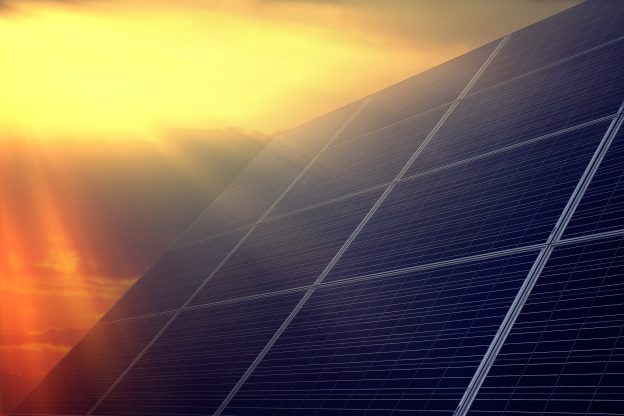Polysilicon:
Polysilicon prices continue to decline throughout the week. The mainstream concluded price for mono recharge polysilicon is RMB 64/KG, while mono dense polysilicon is priced at RMB 62/KG and N-type polysilicon is currently priced at RMB 66/KG.
Looking at the market transaction dynamics, there’s not a significant volume of orders being placed. Some companies are gearing up for December’s order negotiations. Observing the price trend, polysilicon manufacturers are adjusting prices for both new and existing orders. Even some previously high-priced orders have experienced declines. Furthermore, the average price of N-type polysilicon in new orders is generally below the 70000 yuan/ton mark. On the supply side, numerous projects are now in production, leading to a constant increase in the marginal increment of polysilicon and further swelling polysilicon inventory. Consequently, polysilicon manufacturers are grappling with increased pressure to de-stock. Despite a month-on-month rise in operation rates for professional wafer manufacturers, creating additional demand for polysilicon, the surplus supply remains challenging to address.
This week, polysilicon prices continue their downward trajectory, and there’s a significant oversupply of polysilicon. Moreover, with customer installation demand still not turning positive, crystal pulling manufacturers are adopting a pessimistic stance toward future polysilicon prices, displaying a cautious approach to purchasing polysilicon. On the flip side, polysilicon manufacturers are determined to maintain current prices and show no signs of reducing prices to clear inventory. In conclusion, a tug-of-war in pricing dynamics is evident between buyers and sellers.
Wafer:
The prices of wafer have maintained stable throughout the week. The mainstream concluded price for M10 P-type wafer is RMB 2.30/Pc, while G12 P-type wafer is priced at RMB 3.30/Pc and M10 N-type is priced at RMB2.40/Pc.
On the supply side, wafer inventory has returned to the reasonable range, sitting at approximately 1.3-1.5 billion pieces. Analyzing various wafer types, the inventory of 210mm P-type wafers has seen a notable decrease, with the consumption rate slowing due to weakened demand. With the alleviation of inventory pressure, specialized wafer manufacturers are ramping up their operational rates, resulting in a slight month-on-month increase in wafer output. Turning to the demand side, cell manufacturers are indicating a reduction in the production of 182mm P-type cells, while there’s no change in output for other cell types. Consequently, the purchasing demand for 182mm P-type wafers is expected to decrease. Although wafer prices are holding steady this week, considering the divergent operational rates among downstream cell manufacturers, a future divergence in prices between N-type and P-type wafers is anticipated. Moreover, attention should be directed towards whether the demand and supply relationship can sustain stable prices after the higher wafer activation rates lead to an increase in wafer output during the same period.
Cell:
Cell prices have maintained stable this week. The mainstream concluded price for M10 cell is RMB 0.46/W, while G12 cell is priced at RMB 0.56/W. The price of M10 mono TOPCon cell is RMB 0.49/W.
On the supply side, cell inventory can currently sustain for about six to seven days, but the pressure on inventory is mounting as downstream demand gradually declines. We're currently in the midst of the technology iteration phase for N-type and P-type cells. The production capacity of 182mm P-type cells has significantly dropped, leading to a decline in its OEM fees to 1.0-1.2 yuan. Given the current cell price and the manufacturing cost, the production line for 182mm P-type cells is operating at a loss, while the 210mm P-type cells are still profitable, thanks to orders this month. However, as order deliveries conclude, the tense supply and demand dynamics are expected to ease. On the demand side, downstream module prices continue to slide, prompting module manufacturers to push for a reduction in cell prices. Additionally, customer demand is sluggish, and buyers are adopting a more cautious approach to future purchases. This week, cell prices remain relatively stable, but production of 182mm P-type cells has been significantly reduced due to sustained losses, leading to a simultaneous decline in demand and supply. Nevertheless, there is still support from order deliveries for 210mm P-type cells. In conclusion, with module prices consistently decreasing, we anticipate that cell prices will face increasing pressure in the coming weeks.
Module:
Module prices have gone down throughout the week. The mainstream concluded price for 182mm facial mono PERC module is RMB 1.03/W, 210mm facial mono PERC module is priced at RMB 1.04/W, 182mm bifacial glass PERC module at RMB 1.04/W, and 210mm bifacial glass PERC module at RMB 1.05/W.
On the supply side, prices quoted by leading manufacturers to their dealers have plummeted to less than 1 yuan/W, and bidding prices for recent projects are hitting unprecedented lows. The competition among module manufacturers has reached a fever pitch, driving prices in the sector to their rock bottom. As the N-type and P-type technology undergo iteration, production capacity is slated to be officially cleared at its current low price. Shifting to the demand side, October saw a month-on-month decrease in new PV installations, indicating a clear decline in installation demand, according to statistics from the NEA. Although distributed PV installed capacity remains robust, it cannot sustain a significant increase, and centralized ground installations are entering their off-season. Additionally, there's no indication of a rebound in overseas demand, making it challenging for customer demand for module purchases to turn positive.
As the year draws to a close and earinings reports will be reported, manufacturers are grappling with the pressure to meet annual goals, intensifying the need to clear inventory. However, they find themselves in a precarious position in negotiations with customers, compelling them to further reduce prices to facilitate more shipments. In summary, module prices are experiencing a decline this week and are anticipated to further decrease in the near future.







